WMG News
WMG academic helps identify the frameworks for the Government to enrol Autonomous Vehicles
When it comes to Autonomous Vehicles the question on everyone’s lips is when will they be on the roads? However for them to be safely deployed there must be a policy framework.
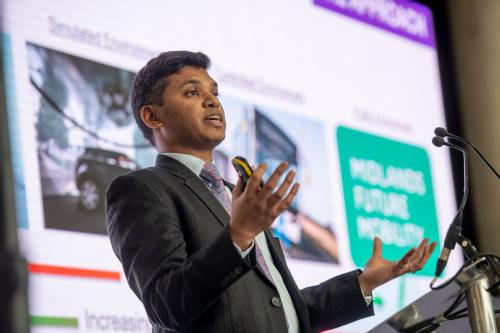 In the report, ‘Safe Drive Initiative: SafeDI Scenario-Based AV Policy Framework - an overview for policymakers, published by the World Economic Forum, Dr Siddartha Khastgir from WMG, University of Warwick as part of the Technical Working Group of the Safe Drive Initiative, contributed to the technological aspects of the policy framework building on his UKRI Future Leaders Fellowship research outcomes.
In the report, ‘Safe Drive Initiative: SafeDI Scenario-Based AV Policy Framework - an overview for policymakers, published by the World Economic Forum, Dr Siddartha Khastgir from WMG, University of Warwick as part of the Technical Working Group of the Safe Drive Initiative, contributed to the technological aspects of the policy framework building on his UKRI Future Leaders Fellowship research outcomes.
In order to measure driving safely in the AV sector there are many challenges, especially how to evaluate the safety of AVs. In this report, the Forum along with industry, government and academic experts have developed guidance and tools to create a useful, practicable governance approach for safety assurance of AVs, based on how it behaves in the context of its operating environment, known as its Operational Design Domain (ODD).
The Safe Drive Initiative seeks to establish a high-level framework to enable regulators and AV developers to work collaboratively to demonstrate an AV system’s capability to operate without intervention from a driver. The initiative proposes a data-driven, scenario based assessment using a graduated approach to safety assurance. The framework’s approach is vehicle and solution-agnostic and builds upon existing national and international standards, where possible. The approach focusses on assessing AV in the context of its deployment ODD by demonstrating behaviour competence in a range of scenarios and covers using simulation, driving in controlled environments and naturalistic on-road driving for evaluation. This can then be adopted by a regulator or government entities, which are responsible for managing AV development and deployment.
The report has highlighted numerous points of testing that all bodies should follow, including:
1. Prepare - Convene necessary stakeholders to identify interim milestones as a function of the deployment ODD which can be defined using standard taxonomies e.g. BSI PAS 1883
2. Define - Specify qualitative scenarios for the interim milestones as behaviour competencies in each ODD sub-set
3. Measure – Using a scenario database (e.g. SafetyPool, UK’s National CAV Test Scenario Database), select scenarios based on ODD for simulation and corresponding success criteria
4. Execute – Conduct on-road tests and perform on going monitoring to evaluate scenario exposure to refine evaluation
The graduated approach enables defining interim milestones as a function of deployment ODD. After completing all steps of the assessment regulators should have a clear idea of which AV developers are ready to operate commercially in the deployment operational design domain. Ideally, the AV developer should demonstrate the vehicle’s capability to operate without a safety driver, but this depends on back-up on mechanisms such as minimal risk manoeuvres and remote operators to take control should they meet a rare situation it is not designed to handle, for example if an emergency vehicle is approaching.
Dr Siddartha Khastgir, from WMG, University of Warwick comments:
“Although this framework is for all regulators who want to implement an operational safety assessment within their jurisdiction, not one-size will fit all, different towns and cities all over the world will have different concerns based on their respective Operational Design Domains, and therefore each step should be customised for each community. Defining the interim milestones and qualitative scenarios as a function of deployment ODD, enables this framework to be used by wide variety of stakeholders like manufacturers, governments, local-authorities etc.
“We do however hope that this framework will help us see the safe development and deployment of CAVs, so that in the future we can see the benefits of safe, clean and inclusive mobility. WMG are already researching this in many ways, as we are leading the Midlands Future Mobility testbed, which sees autonomous vehicles being tested on real worlds, and have the facilities, such as the 3xD simulator to test AVs before they go on real world tests.”
Tim Dawkins from the World Economic Forum comments:
“By bringing together a multi-stakeholder community of industry, academia, safety organizations and regulators, we’ve developed a pro-active approach which will enables policymakers to structure a safety evaluation for AVs which reflects the challenges of their roads, and expects a common standard of safety across different types of vehicle. Partnering with research institutions like WMG is essential to building the knowledge base to empower regulators for success.”
11 NOVEMBER 2020
NOTES TO EDITORS:
High-res images available at:
- 3xD Simulator: https://warwick.ac.uk/services/communications/medialibrary/images/november_2020/3xd.jpg
- Dr Siddartha Khastgir: https://warwick.ac.uk/services/communications/medialibrary/images/november_2020/sid_42.jpg
Report available to view at: http://www3.weforum.org/docs/WEF_Safe_DI_AV_policy_framework_2020.pdf
More details about Siddartha’s UKRI Future Leadership can be seen at:
- https://warwick.ac.uk/fac/sci/wmg/research/cav/vandv/ukriflf/
- https://youtu.be/sjpL82E-JCQ
A TEDx talk by Siddartha can also be seen at: https://youtu.be/KrOOXE3SW-A
The next generation of WMG engineers
Congratulations to the 2018 cohort of Graduate Trainee Engineers who have all now successfully completed the Scheme, and secured new positions as Project Engineers at WMG.
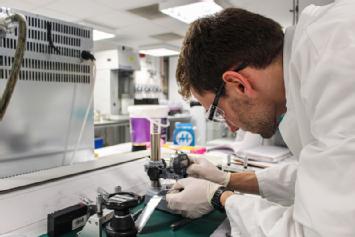 Over the last two years the eight graduates; Harry Chan, Edward Griffin, Katerina Gonos, Jet Feng, Ben Ayre, Adam Szypula, Vidya Narayanan and Puja Unadkat; have been developing their engineering skills by working with academics and industry partners on either autonomous vehicles or energy innovation research.
Over the last two years the eight graduates; Harry Chan, Edward Griffin, Katerina Gonos, Jet Feng, Ben Ayre, Adam Szypula, Vidya Narayanan and Puja Unadkat; have been developing their engineering skills by working with academics and industry partners on either autonomous vehicles or energy innovation research.
Several of the graduates have also had their work published in leading academic journals and shared their expertise at key industry events.
In addition all eight have also supported WMG’s Outreach programme by taking part in workshops, demonstrations and talks with local school children including at the University’s Family Day events.
WMG’s Graduate Scheme Manager, Louise Oddy explains: “The recent success of our graduates is a true testament to their consistent hard work, determination and professionalism. They have made a lasting impact across several areas of WMG and will continue to do this within their roles as Project Engineers. Growing our own talent is integral to the future success of WMG and I could not be prouder of all of the Graduate Engineers. Thank you to those across the department that continue to support the scheme and make our programme so unique.”
 Project Engineer, Ed Griffin adds: “WMG is an exceptional organisation where the graduate scheme promotes excellent tailored development in each graduate’s individual technical field. Our exposure to a range of cutting-edge automotive research, combined with various project management opportunities, is now invaluable in our Project Engineer roles.”
Project Engineer, Ed Griffin adds: “WMG is an exceptional organisation where the graduate scheme promotes excellent tailored development in each graduate’s individual technical field. Our exposure to a range of cutting-edge automotive research, combined with various project management opportunities, is now invaluable in our Project Engineer roles.”
Find out more about the WMG Graduate Scheme here.
WMG Chief Engineer takes on new role at AESIN
 WMG’s Chief Engineer, Gunny Dhadyalla, has been appointed Co-Chair of AESIN’s ADAS and HAV (Highly Automated Vehicles) Workstream.
WMG’s Chief Engineer, Gunny Dhadyalla, has been appointed Co-Chair of AESIN’s ADAS and HAV (Highly Automated Vehicles) Workstream.
This Workstream focusses on enabling technology for safer and more automated vehicles.
Gunny, who works in WMG’s Intelligent Vehicles research team will work alongside the new AESIN Chair, Tim Edwards of HORIBA-MIRA, bringing extensive industry and research experience to the future development of the Workstream.
Gunny explains: “My role as co-chair will involve working together with Tim to look at opportunities for the UK electronics value chain.
“We will be responsible for shaping the activities within the Workstream, which include; Sensing, System Engineering and Control, Validation and Verification, Human Machine Interfaces and Standards and Safety - all areas where WMG and the University have high levels of capability and expertise.
“Of particular interest, for us, is to understand the role of high value manufacturing and what the HVM Catapult centres can do to progress the development of future supply chains specifically in the areas of ADAS and HAV.”
Congratulations Gunny.
WMG Professor to present at key webinar exploring The Future of Logistics
 Professor Paul Jennings will be joining the line up at The Future of Logistics, free webinar, this Friday (25th September).
Professor Paul Jennings will be joining the line up at The Future of Logistics, free webinar, this Friday (25th September).
The Future of Logistics, produced by Barclays Manufacturing Logistics and Transport team, will feature presentations by three experts on the logistics industry from the Road Haulage Association (RHA), Unipart Logistics and WMG. Professor Jennings will be sharing his expertise on connected and autonomous vehicles.
Legislation on vehicle emissions, Brexit, Covid-19, an aging workforce, vehicle autonomy and smart highways, the surge in e-commerce, and vehicle electrification are some of the biggest influencers shaping the future of logistics that will be debated.
Professor Paul Jennings, a physicist and expert in connected transport systems, will present on autonomous vehicles and also on a range of other research into transportation that can help keep goods flowing; GPS, traffic management, smart roads and cities and driver behaviour. Professor Jennings led the development of WMG’s 3xD Simulator for Intelligent Vehicles and is the current lead on Midlands Future Mobility, the £31 million public CAV (connected and autonomous vehicle) test environment.
Richard Burnett, CEO of the RHA will discuss diesel legislation, Brexit, labour and the trend of “stranded assets”, where trucks purchased by logistics firms are inoperable within a short period due to changing local regulations on vehicle emissions. Technology sector director at Unipart Logistics, Nicola Rouse, will discuss how technology is changing Unipart’s business and the new opportunities more data brings, plus the importance of sustainability and resilience in business.
Barclays’ Head of Manufacturing, Transport and Logistics, Lee Collinson, and logistics business specialist Ian Cranidge, will give an overview of their customers’ experiences of the logistics industry and where they expect improvement from operators, the government and in technology, at this challenging time.
“With the rapid rise in e-commerce before and through lockdown, plus environmental pressure on hauliers and new technology improving the intelligence of delivering goods, the logistics business is changing fast,” says Lee Collinson. “More home deliveries, Brexit, more electric vehicles and even the expected reshoring of manufacturing from Asia will put pressure on logistics operators but offer new business models too. We urge you join this free-to-attend webinar to find out more.”
A Q&A session follows the presentations where participants can put questions to the panel.
The webinar is free to attend on registration, once approved by Barclays. The event takes place at 10am on Friday 25th September.
You must register before the event, and places are first-come first-served.
Register for the event here.
ENDS
You can train your brain to reduce motion sickness
- Everyone can suffer from motion sickness, and around one in three are known to be highly susceptible to motion sickness
- Motion sickness can occur during car travel, at sea, using virtual reality headsets and is expected to be a significant factor in self-driving car
- A cognitive training tool designed by researchers at WMG, University of Warwick has been proven to help ‘train the brain’ to reduce motion sickness by over 50%
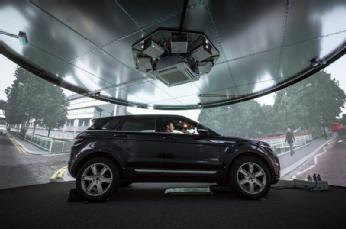
Visuospatial training exercises can train the brain to reduce motion sickness, providing a potential remedy for future passengers riding in autonomous vehicles. Researchers at WMG, University of Warwick reduced motion sickness by over 50% using the training tool and it was found to be effective in both a driving simulator and on-road experimentation.
Everyone can experience motion sickness, with 1 in 3 of us being highly susceptible to motion sickness. Motion sickness, sometimes referred to as travel sickness usually can occur during travel in cars and boats, but also when using virtual reality headsets or in a simulator.
With the concept of autonomous vehicles coming closer to our roads, the need to reduce motion sickness is more apparent than ever. It is expected that due to potential vehicle designs and people’s desire to engage in non-driving related tasks such as reading or watching films, motion sickness will be a significant factor for vehicle occupants.
In fact, if we were able to reduce motion sickness so much that people could read and work in future cars, it’s predicted that this productivity boost could be worth as much as US$508billion per year according to Morgan Stanley.
Considering the number of people affected, relatively little research has been done into motion sickness, especially not into motion sickness and autonomous vehicles.
However, in the paper ‘A Novel Method for Reducing Motion Sickness Susceptibility through Training Visuospatial Ability – A Two-Part Study’, published in the journal Applied Ergonomics, researchers from WMG, University of Warwick have been successful in reducing motion sickness.
In the project, researchers have found by using visuospatial training you can essentially train the brain to reduce motion sickness by over 50%.
Participants in the study went in either the WMG 3xD simulator for a driving simulator trial, or on an on-road trial where they were driven around as passengers, imitating what it would be like to be in an autonomous vehicle.
Baseline motion sickness was first measured during their initial ride, using a verity of pre-validated questionnaires, to report severity of the symptoms. A ‘fast motion sickness scale’, was also used to capture ‘real-time’ symptoms as participants were asked to rate their sickness every minute on a scale of 0-20 considering nausea, discomfort, and stomach problems.
 After their first run, participants completed various pen-and-paper visuospatial training tasks, once per day for 15 minutes per day, for 2 weeks. This included exercises such as a looking at a pattern of boxes that and having to identify which image out of three is the original just rotated, paper folding tasks and understand spatial patterns.
After their first run, participants completed various pen-and-paper visuospatial training tasks, once per day for 15 minutes per day, for 2 weeks. This included exercises such as a looking at a pattern of boxes that and having to identify which image out of three is the original just rotated, paper folding tasks and understand spatial patterns.
After the training period, participants took part in another motion sickness assessment and it was recorded that motion sickness reduced by 51% in the driving simulator, and 58% in the on-road trial.
Dr Joseph Smyth, from WMG, University of Warwick comments:
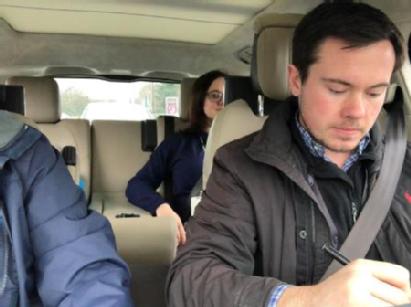
“Being able to reduce an individual’s personal susceptibility to motion-sickness using simple ‘brain training style’ tasks training is a massive step-forward in the development of future transport systems, including autonomous vehicles. Human factors research is all about how we can design products and services that are pleasurable. Motion sickness has, for a long time, been a significant limitation to many peoples transport options and this research has shown a new method for how we can address this.
“I hope that in the future we can optimise the training into a short, highly impactful method. Imagine if when someone is waiting for a test-drive in a new autonomous vehicle they could sit in the showroom and do some ‘brain training puzzles’ on a tablet before going out in the car, therefore reducing their risk of sickness. It’s also very likely this method can be used in other domains such as sea-sickness for navy staff or cruise passengers. We are particularly excited about applying this new finding to Virtual Reality headset use.”
Pete Bennett, from Jaguar Land Rover comments:
“Making our future autonomous vehicles as user friendly as possible is key, and motion sickness is something we knew we needed to research as so many people experience it even now as a passenger.
“The research done by WMG has shown that motion sickness can be reduced, and we can incorporate the research into our future vehicle design process.”
WMG Professor takes up key editorial role at international journal
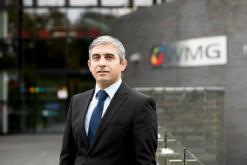 Congratulations to WMG Professor of Connected and Automated Mobility Systems, Mehrdad Dianati, who has been appointed as Field Chief Editor for Frontiers in Future Transportation journal.
Congratulations to WMG Professor of Connected and Automated Mobility Systems, Mehrdad Dianati, who has been appointed as Field Chief Editor for Frontiers in Future Transportation journal.
As an esteemed expert within autonomous vehicle research, Professor Dianati was appointed to define the overall scope and reputation of the journal, and provide key support and guidance to the editorial board.
As Field Chief Editor, he will also be tasked with creating a community of future transportation researchers and ensure their work is fully represented in key publications.
Commenting on his new role, Professor Dianati said: “As the transport systems become more complex and multifaceted cyber-physical systems, multi-disciplinary and innovative approaches to dissemination of the scientific and technological innovations are crucial to transform the ways that scientists impact the society.
“Frontiers in Future Transportation focuses on providing a state-of-the-art open access platform to maximize the impacts of the cutting-edge scientific and technological innovations that will transform the future of transport and mobility systems. Our ambition is to facilitate a timely, constructively selective and high-caliber peer review process through our distinguished multi-disciplinary and international editorial board to ensure high-quality publications with a wide reach and impact.”
Find out more about Professor Dianati’s research at WMG here.
Dr Siddartha Khastgir re-elected to the IMechE Council of Members
WMG’s Head of Verification and Validation for Intelligent Vehicles, Dr Siddartha Khastgir, has been re-elected to the IMechE Council.
The results were announced at the Institute’s AGM on Wednesday (27th May).
 Dr Khastgir said: “I am excited and honoured to be re-elected to the IMechE Council of Members. As a society, and as an Institution, we are in a critical juncture, and it is important to ensure that we re-think the future of the engineering profession. We need to be creative in our new approaches -addressing the challenges of education and manufacturing which the pandemic has highlighted.
Dr Khastgir said: “I am excited and honoured to be re-elected to the IMechE Council of Members. As a society, and as an Institution, we are in a critical juncture, and it is important to ensure that we re-think the future of the engineering profession. We need to be creative in our new approaches -addressing the challenges of education and manufacturing which the pandemic has highlighted.
“I have volunteered at the Institution for over 11 years now, and I am honoured to be given this opportunity, by wider IMechE membership, to be part of this journey and work with fellow Council members and IMechE Trustees.”
Work begins on autonomous vehicle trial route
Work has begun on the 300km Midlands Future Mobility test environment - spanning from Coventry to Birmingham, which will see autonomous 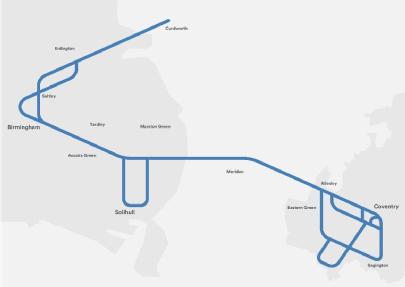 vehicles trialled on urban, rural, suburban and highway roads. The project is run by a consortium of companies including WMG, MIRA, Transport for West Midlands, Costain, Amey, Wireless Infrastructure Group, Vodafone, Coventry University and Highways England.
vehicles trialled on urban, rural, suburban and highway roads. The project is run by a consortium of companies including WMG, MIRA, Transport for West Midlands, Costain, Amey, Wireless Infrastructure Group, Vodafone, Coventry University and Highways England.
The autonomous vehicle industry is estimated to be worth up to £62bn to the UK economy by 2030, and hoping to lead the way to autonomous vehicles is the West Midlands, as WMG, University of Warwick begins work on autonomous vehicle testing routes.
Autonomous vehicles will be trialled along the Midlands Future Mobility route, the route has been developed by TfWM in collaboration with Coventry City Council, Birmingham City Council and Solihull Council and provides over 300km of inner city, suburban and rural roads from Coventry to Birmingham, on which to fully assess vehicle performance in a wide range of real world locations and situations.
The first types of vehicle to be trialled along the route will be “connected” vehicles. Connected vehicles can ‘talk’ to each other and warn of traffic, crashes and other hazards that other connected vehicles may have seen or be heading towards.
The vehicles on the Midlands Future Mobility route will not be driving themselves during the early stages of research, initially they will have a driver and occasionally a second person monitoring how the vehicles are working. All testing will be as safe if not safer than current vehicles on the road.
The route includes infrastructure such as smart CCTV, weather stations, communications units, and highly accurate GPS.
In the future autonomous vehicles will be trialled on the route, however these will also be closely monitored by safety operators ready to take over immediately in the event of a problem. These autonomous vehicles will appear gradually as more and more advanced “Driver Assistance” systems are tested paving the way, such as lane centring and auto-speed limiting technology.
The route itself causes no disruption to drivers or the homes along it, as it uses existing road infrastructure 95% of the time. Phase one of the route includes the University of Warwick, Coventry ring road, roads in Meriden, Solihull and central Birmingham around the Jewellery Quarter.
Later this year the route will be extended to include rural and highway roads and span up to 350km.
Project consortium member Costain and contractor Siemens Mobility have begun work on the route, which will officially open for trials later this year. Both firms, are of course, practicing social distancing in the construction of important technical features such as CCTV networks along the route.
John Fox, Project Director, Midlands Future Mobility comments: 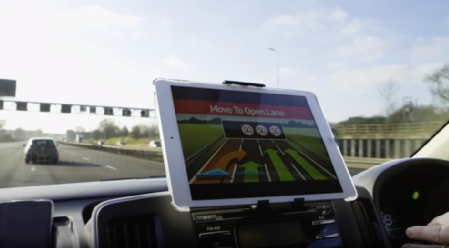
“It is great to see that work has begun in making roads a more connected place, where drivers can make their journeys more safely and where goods can be delivered more efficiently.
“The West Midlands has a rich history of the automotive industry, and to see it is now progressing into Autonomous vehicles feels somewhat momentous.”
Mayor of the West Midlands Andy Street, who leads TfWM, said: “Connected and autonomous vehicle technology has the potential to radically change our lives, and I am pleased the West Midland is leading the way in this sector with research facilities and production plants already in place.
“I am determined our region will become a global leader in electric and autonomous vehicle technology, as I know we have the skills, facilities, and drive to compete with any other city or region in the world.
“Seeing our roads being used as a test bed for this new technology is both exciting and a step forward, and this vital research will help pave the way to bring key investment and jobs to the region as we look to bounce back from the COVID-19 crisis.”
John Batterbee, Technology Solutions Director, Costain Group comments:
“At Costain we’re excited about how our ambitious work together with our market leading partners in the Midlands is enabling safer, cleaner and faster journeys. Today is a key milestone in starting to deploy the advanced infrastructure technologies we’ve developed over the last couple of years that are putting the UK at the forefront of the global mobility revolution. The cameras and video analytics we’re deploying will, for example, save lives by enabling drivers to be alerted to hazards beyond the line of sight.”
Wilke Reints, Managing Director of Intelligent Traffic Systems for Siemens Mobility in the UK, comments:
“We are proud to have been contracted to undertake work on this project. With CAVs offering huge potential to improve safety, reduce congestion and help optimise traffic flow, this project is a further demonstration of the UK’s capabilities in this exciting and fast-moving sector. It allows us collectively to demonstrate how smart technology enables vehicles to be connected via high-speed, high-capacity wireless infrastructure across a whole road network.”
Autonomous Vehicle safety standards to be set by Warwick academic
·  Autonomous Vehicles safety will be tested by researchers at WMG, University of Warwick – thanks to a seven year UKRI Future Leader Fellowship awarded to Dr Siddartha Khastgir, worth £1.2m.
Autonomous Vehicles safety will be tested by researchers at WMG, University of Warwick – thanks to a seven year UKRI Future Leader Fellowship awarded to Dr Siddartha Khastgir, worth £1.2m.
Connected autonomous vehicle technology prototypes have existed for some time, however questions around the safety of this technology from the public and industry who want to commercialise these technologies has blocked it from developing.
The future with CAV has to be more reliable, more efficient and less risky. So safety testing is essential to informing people’s opinion about this new technology.
In order to prove that CAVs are safer than human drivers, it’s been suggested they need to be driven for more than 11 billion miles. However, instead of the number of miles, it more important to focus on the experiences of the CAV in those miles to identify any smart miles which expose failures in CAV.
Dr Khastgir’s fellowship will therefore develop pioneering testing methodologies and international standards to enable robust and safe use of CAV, particularly focusing on creating both fundamental knowledge and applied research methods and tools.
WMG, University of Warwick, has created a concept of the “evaluation continuum” for CAV, which involves using various environment like digital world, simulated environment, test track testing and real-world for testing.
There are two aspects which are common to each of the evaluation continuum environments and also the focus areas of the fellowship research
1) Test Scenarios: exposing failures of the CAV
2) Safety Evidence: establishing how safe is safe enough?
As a part of this fellowship, three approaches will be explored to identify the smart miles which expose any CAV failures including:
· Using Machine Learning (ML) based methods including Bayesian Optimisation to create test cases for test scenarios
· Safety Of The Intended Functionality (SOTIF) (Innovative safety analysis of CAV) based test scenarios using Systems Theoretic Process Process Analysis (STPA)
· Translating real-world data into executable test scenarios for a simulation tool.
All these approaches will together contribute to the creation of a UK’s National CAV Test Scenario Database. Dr Khastgir has previously written about enabling British CAV deployment and the role of standards for the BSI (British Standards Institute), and hopes to build on the Fellowship research outcomes to build standards for national and international purposes.
Dr Siddartha Khastgir, from WMG, University of Warwick comments:
“The global Connected and Autonomous Vehicles (CAV) industry is estimated to be worth over £50bn by 2035, with the UK CAV industry comprising over £3billion of this, however questions around safety are always raised, by the automotive industry and the public.
“This hinders the process of commercialising CAVs, however my UKRI Future Leaders Fellowship to research the safety of CAVs can help Department for Transport, the automotive industry and the public to be reassured that they are safer than human drivers.
“I am incredibly grateful for the UKRI Future Leader Fellowship, as it puts the UK and the University at the forefront for research and development into the safety of CAVs.”
Margot James, Executive Chair at WMG, University of Warwick adds:
“WMG is very proud that Dr Siddartha Khastgir has been awarded a prestigious UKRI Future Leaders Fellowship (FLF). Through Siddartha’s research we can enable the UK to become a world leader in safe CAV deployment.”
Kirsty Grainger, Director, Future Leaders Fellowship Scheme adds:
“Dr Siddartha Khastgir is taking forward a really exciting project that supports the government’s Future of Mobility grand challenge. Through the Future Leaders Fellowships we’re not only delivering cutting edge research like this, but also investing in the individuals who have the potential be leading researchers and innovators in years to come. I am delighted that Dr Khastgir is part of the programme.”
The future of cyber-security in connected and autonomous mobility analysed by WMG
The Cyber Security for Connected and Autonomous Mobility (CAM) has been investigated in a series of projects funded by the Centre for Connected and Autonomous Vehicles (CCAV) and supported by Zenzic and InnovateUK (part of UKRI).
Out of seven projects, WMG, at the University of Warwick was involved in three:
1. Positioning, Navigation and Timing (PNT) Cyber Resilience: a Lab2Live Observer Based Approach
2. ResiCAV
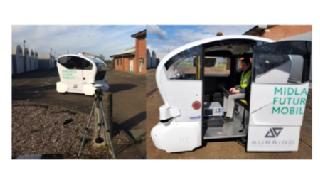 Each project was tasked with exploring innovative methods for measuring and monitoring cyber security, defining a set of requirements for a future Cyber Security facility/capability and understanding the commercial landscape for such a facility.
Each project was tasked with exploring innovative methods for measuring and monitoring cyber security, defining a set of requirements for a future Cyber Security facility/capability and understanding the commercial landscape for such a facility.
These 3 objectives were addressed across a number of different themes with Cyber for CAM: Monitoring, Threats to connected vehicle, networks, Threats to automated vehicles or Countermeasure and risk mitigation.
Dr Elijah Adegoke, from WMG, University of Warwick was involved in the PNT Cyber Resilience project. In collaboration with Spirent, key recommendations made to Government include that spoofing and jamming attacks on GNSS signals are capable of leading to severe loss of functionality and safety in CAVs; thus there is an urgent need to invest in independent facilities capable of seamlessly testing attacks on CAM PNT systems in both controlled laboratory and live environments.
Zenzic, the University of Warwick and Spirent now aim to work with standardisation bodies to guide the development of GNSS attack detection and GNSS resiliency assessment standards, and the responsible disclosure of information on threat actors and attack events.
Dr Adegoke commented: “To investigate jamming and spoofing in CAM PNT systems, a test facility needs to be able to quantify the resilience of a CAV against both radio frequency based and software attacks for diverse receiver operating systems and hardware architectures. Access to a drive-in anechoic chamber, such as WMG’s Communications and Sensors Lab in the Professor Lord Bhattacharyya Building, to allow the legal testing of over-the-air attacks is highly beneficial.”
 Professor Carsten Maple, of WMG, University of Warwick, was involved in ResiCAV and BeARCAT.
Professor Carsten Maple, of WMG, University of Warwick, was involved in ResiCAV and BeARCAT.
ResiCAV was led by Horiba Mira, and highlighted how connected and autonomous vehicles (CAVs) and their associated infrastructure can develop real-time responsiveness to cybersecurity threats, and highlighted the ‘urgent need’ for a national road transport cybersecurity programme in order for the UK to safely support CAV adoption across the transport network. Professor Carsten Maple comments:
“The ResiCAV project has proven that the UK could become a world-leader in automotive cybersecurity and vehicle resilience, however this can only be done if there is a collaboration between industry and the shared use of testbeds. The project has shown that cyber resilience can only be effectively achieved by developing a new engineering methodology. We have, with partners, started the journey to formalising the methodology, and provide the tools and techniques for achieving resilience through manufacture and operation.
“I hope this next step after this project is to see funding for the development of the ‘UK Centre of Excellence for Road Transport Cybersecurity Resilience’ to thrust the UK to the forefront of automotive cybersecurity.”
Professor Maple was also involved in BeARCAT, led by Cisco the BeARCAT project highlights that with the high infrastructure set-up costs and extensive overheads in the management of a test facility for automotive cyber security, the most cost-effective course of action is for a UK CTF (Cyber Test Facility) to be collocate with the existing testbeds. He comments:
“We are pleased to have developed a Security Framework for cyber security testing in the CAV ecosystem, including coverage of security threat modelling and risk assessment. Working with our partners we have defined mechanisms for communications resilience and provide a blueprint, based on the security framework, for testing certification. We hope these contributions will be helpful to the Government as it seeks to establish a world-leading capability in developing and assessing cyber security for automotive systems.”
All three projects prove the UK could be pioneering Cyber Security in Connected and Autonomous Mobility if companies within the industry work together to share resources and testbeds, which could bring autonomous vehicles one step closer to our roads.
DOWNLOAD NOW: Cyber Resilience in CAM – Cyber Feasibility Report: zenzic.io/cybersecurity/
ENDS
